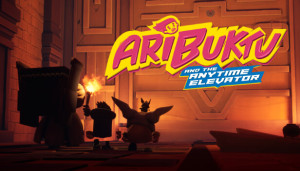The Art of Game Development: Behind-the-Scenes Insights into Creating Casino Classic
Creating a casino classic game is a complex and fascinating journey that combines creativity, technology, and an understanding of player psychology. From the initial idea to the final product, game development involves multiple stages, each requiring unique skills and meticulous attention to detail.
The development process starts with a spark of creativity. Game designers brainstorm ideas, often drawing inspiration from traditional casino games like blackjack, poker, and slot machines. Designers create concept art and sketches to visualize characters, game mechanics, and the overall aesthetic.
Once the concept is solidified, writers craft compelling narratives that engage players. Even in casino games, a captivating story can enhance the user experience. A slot game might include a storyline that unfolds as players progress, adding depth and excitement to the gameplay.
__large.jpg)
The Role of Technology
Technology is fundamental in bringing a game's creative vision to life. Developers build games with robust game engines like Unity, Unreal Engine, or Godot. These engines provide essential tools to create interactive environments, realistic physics, and smooth animations.
Programmers craft intricate lines of code to ensure the game functions seamlessly, utilizing programming languages such as C++, C#, or Java, which serve as the game's backbone. Specialized software tools are also employed for various aspects of game development. Artists and animators use tools like Maya or Blender to create 3D models and animations, while sound designers employ software like Pro Tools to create immersive audio effects.
Audio effects are one of the most critical factors in game development. Studies have shown that players prefer playing at specific casinos due to their distinctive audio effects. The preference highlights the importance of sound in creating an engaging gaming experience. A good example is the McLuck casino promotions, which focuses on this aspect and has designed unique audio effects for various features, enhancing the overall player experience.
Player Feedback and Iteration
Player feedback is an invaluable resource in game development. Once a prototype is ready, it undergoes rigorous playtesting. Developers gather feedback from players to identify areas that need improvement.
The most important aspect is players' feedback; it helps refine the gameplay mechanics, improve graphics, and enhance the overall user experience. It’s like refining a recipe based on customer reviews to create the perfect dish.
Furthermore, developers often release beta versions to select players to gather more feedback. Based on the feedback, the developers make necessary adjustments before the final release. Continuous updates and patches post-release ensure the game remains fresh and engaging, addressing any bugs and introducing new features.
The Magic of Collaboration
Collaboration is at the heart of successful game development. A typical game development team includes designers, artists, programmers, sound engineers, and testers. Each member brings unique skills to the table, contributing to different aspects of the game. Regular meetings and brainstorming sessions ensure everyone is on the same page, working towards a common goal.
In addition, game development often involves collaboration with external partners. For example, voice actors bring characters to life, while marketing teams promote the game. It is essential to creating a polished and successful game.
Psychological Elements in Game Design
Understanding player psychology is crucial in designing a casino game. Developers use principles of gamification to make games more engaging. The challenge-reward cycle, where players are rewarded for overcoming challenges, creates a sense of accomplishment and keeps players coming back. The cycle stimulates the release of dopamine, a neurotransmitter associated with pleasure and motivation, making the game addictive.
Moreover, social elements are incorporated to enhance player engagement. Multiplayer features, leaderboards, and in-game chat options foster a sense of community among players. These features tap into humans' social nature, making the gaming experience more enjoyable and immersive.
Final Touches and Deployment
As the game nears completion, developers focus on polishing every aspect. This includes fine-tuning gameplay mechanics, enhancing graphics, and ensuring an intuitive user interface. Rigorous testing is conducted to identify and fix any remaining issues. Once the game meets the quality standards, it’s packaged and prepared for release.
The deployment process involves distributing the game across various platforms, such as consoles, PCs, and mobile devices. Post-launch support is crucial to address issues and update the game with new content. The ongoing support ensures the game remains relevant and continues to attract players.
Final Words
Developing a casino classic game is a complex and rewarding journey that combines creativity, technology, and psychology. From the initial idea to post-launch support, every process stage requires careful planning and execution. By understanding the behind-the-scenes efforts, we can appreciate the dedication and talent that go into creating the games we love.
Game development is a collaborative and iterative process that evolves with player feedback and technological advancements. The next time you play your favorite casino game, take a moment to appreciate the artistry and effort behind its creation.









